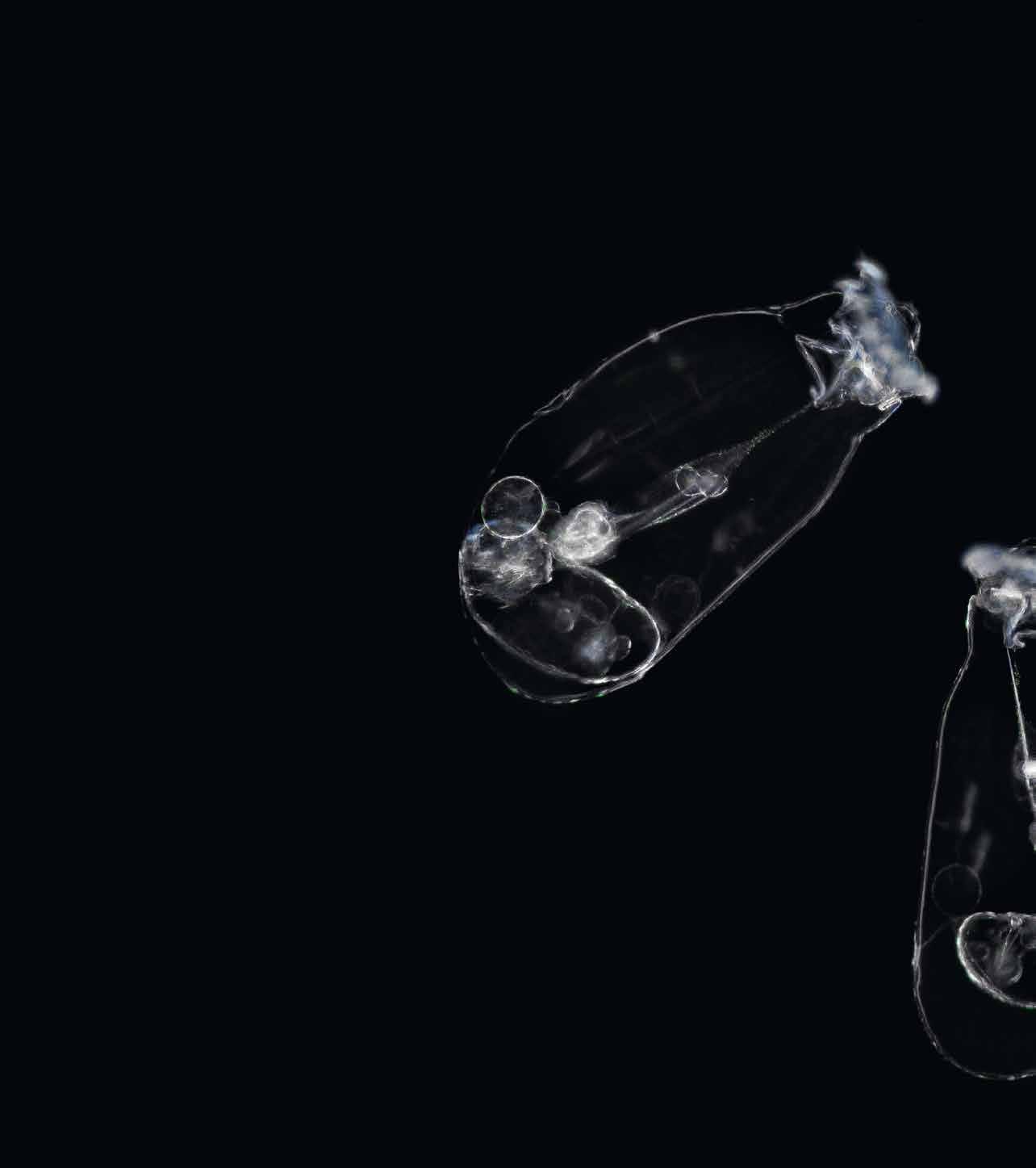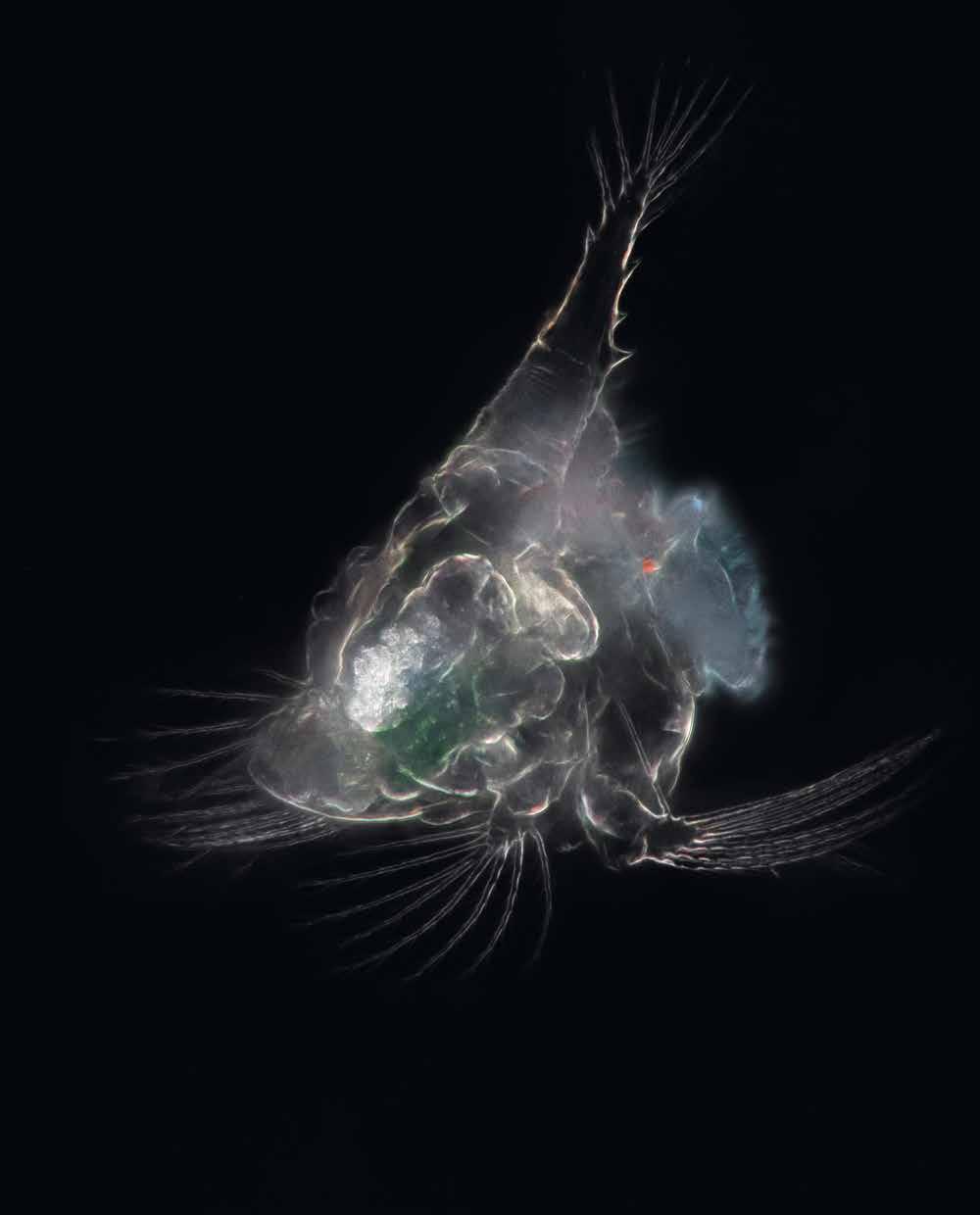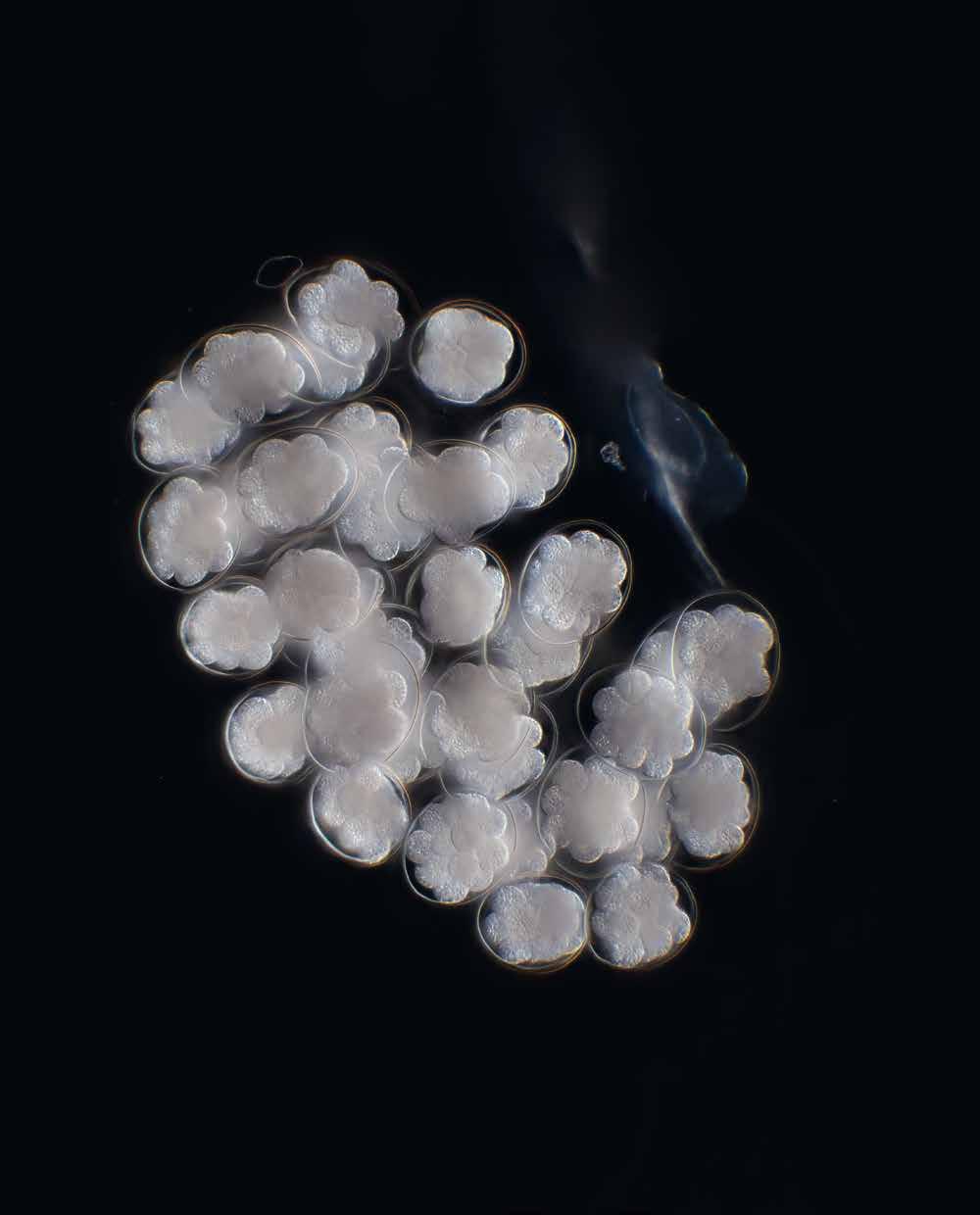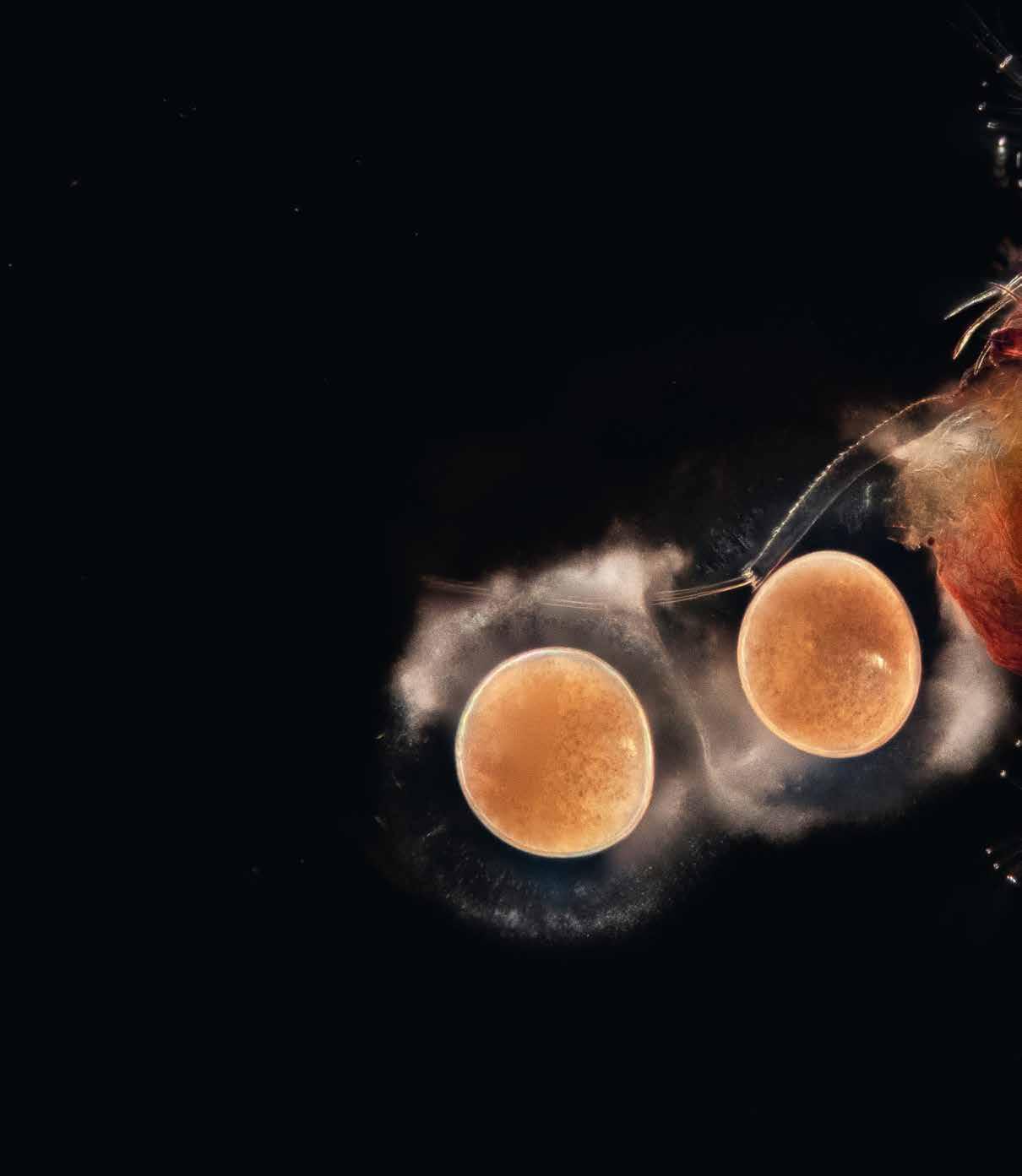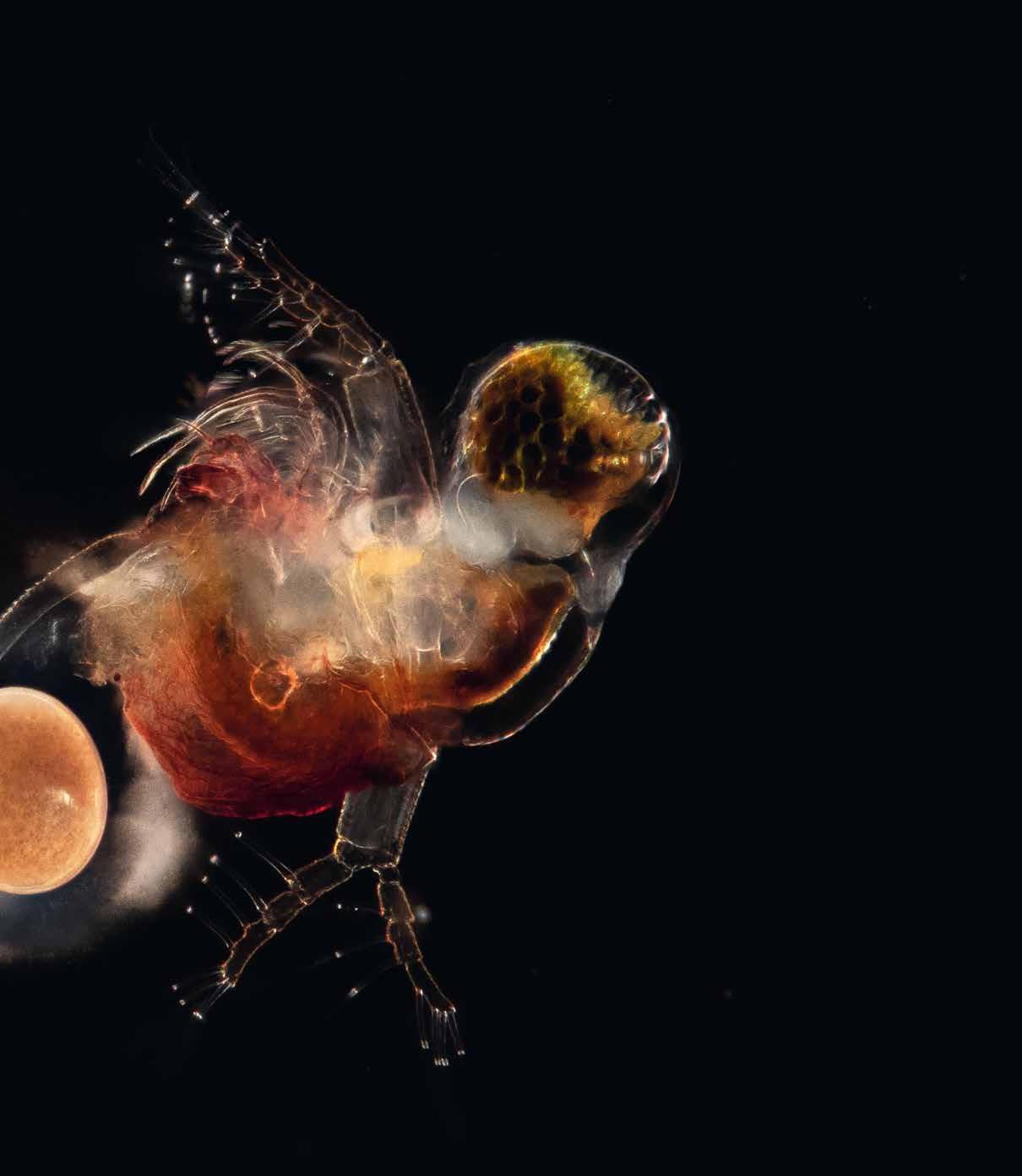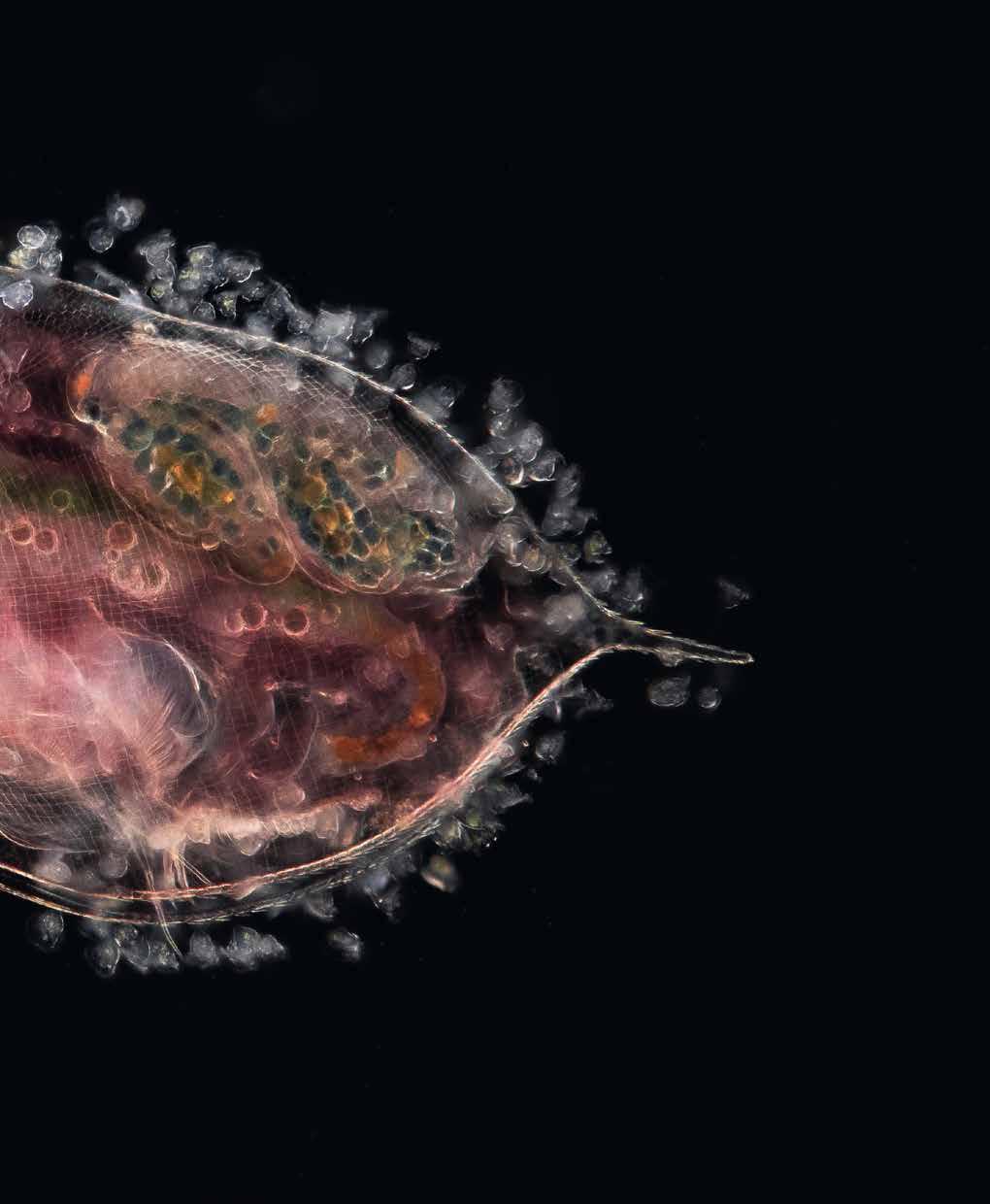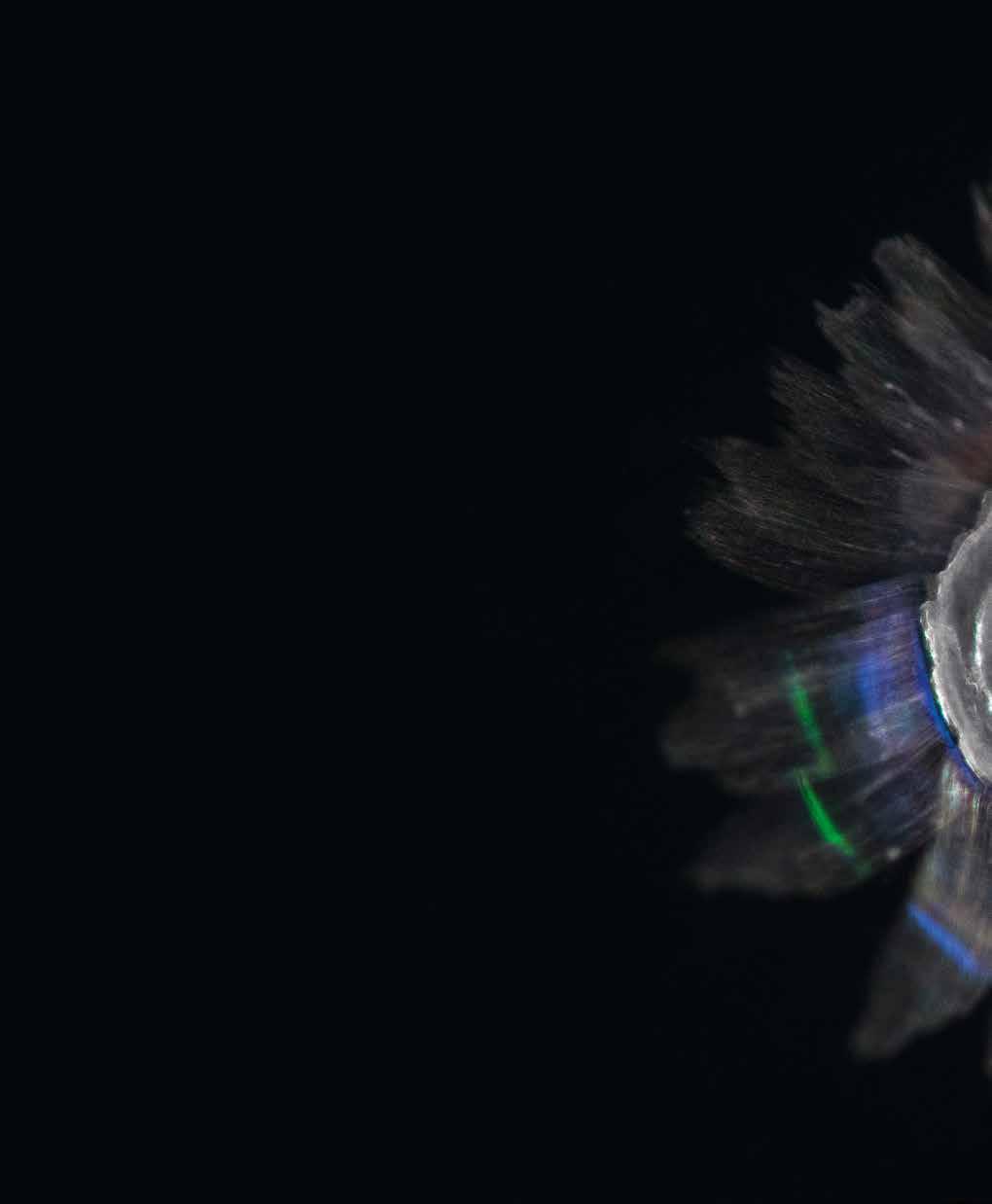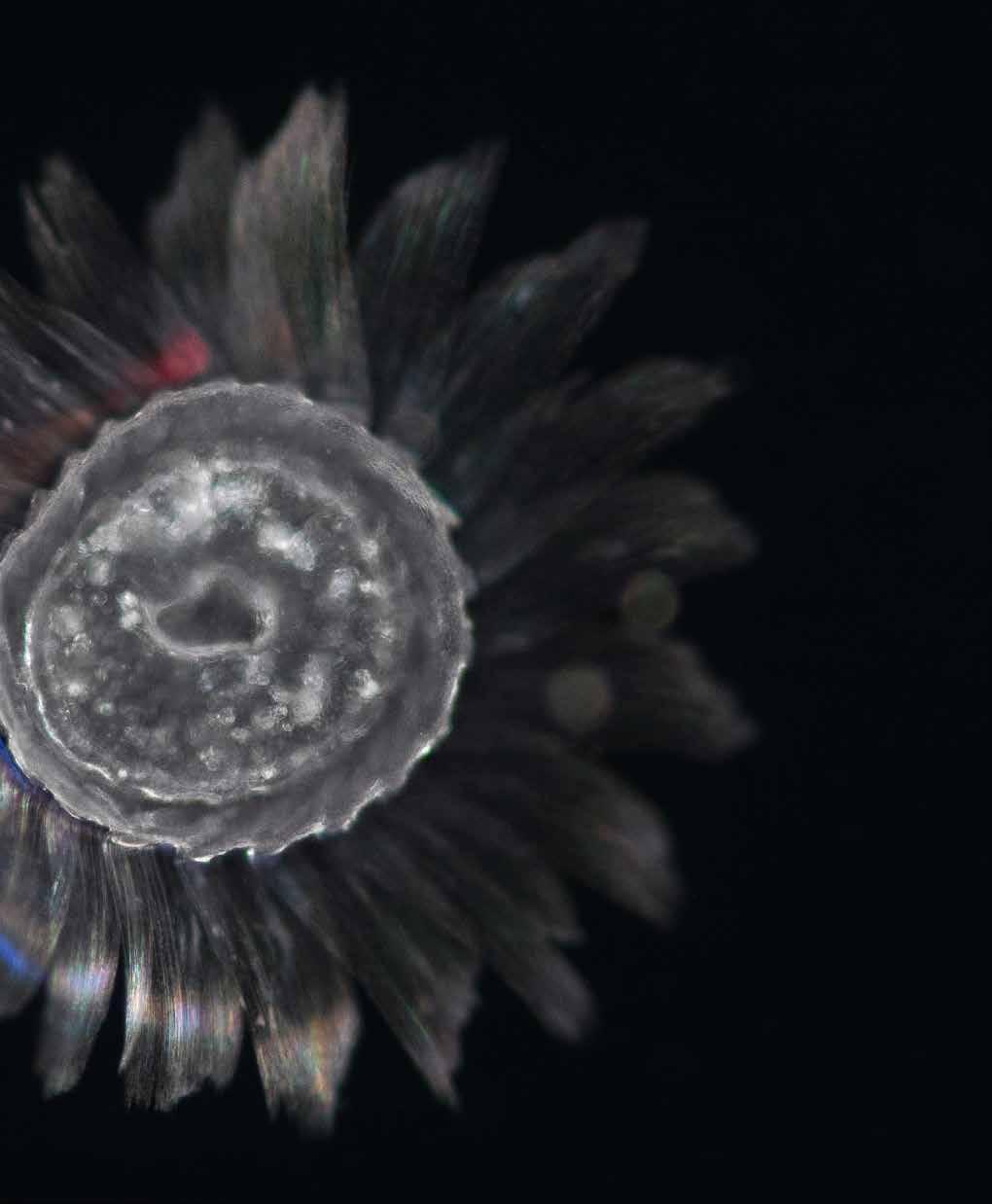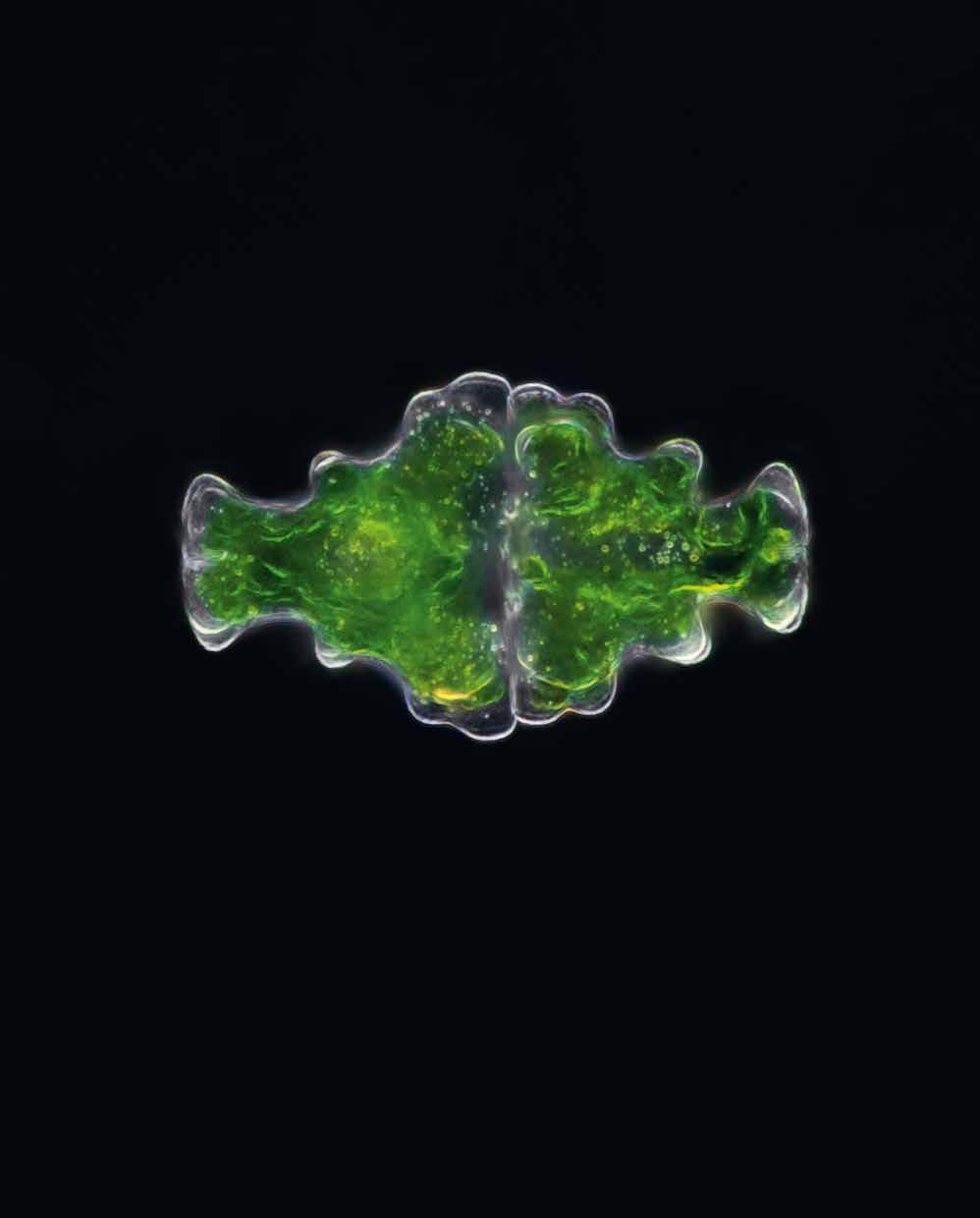
FOREWORD
Plankton. These microscopic critters are vital to nearly all life on Earth. They are the basis of nearly all aquatic food webs, supporting much of life under surface and a fair amount above –including us. Like plants, phytoplankton use the light of the sun for energy, releasing oxygen in the process. They do this on a truly astounding scale, producing more than 50% of the oxygen on Earth. Every other breath we take, is provided by the ocean. They even control our planet’s climate. Without plankton we simply couldn’t exist.
Plankton occurs in such huge numbers their blooms can change the colour of the ocean, visible from space. However, despite the importance and abundance, their microscopic size – some are half the diameter of a human hair - means they are all but invisible to us.
Jan van IJken’s skill, patience and artistic touch reveal this unseen realm in an extraordinary way. Through his unique photo series, we are introduced to a world of intricate complexity and stunning beauty. A truly distinctive view of our ‘inner space’ so vital to all life on Earth.
Will Ridgeon
BBC Producer / Director
Blue Planet II and Planet Earth III



A TREASURE CHEST OF BIODIVERSITY
Imagine lying on your back, being held and supported by a body of water, gently drifting along, going with the flow. Plankton do that. The term plankton is used to describe a wide range of free-living organisms who, either despite their small size, or lack of locomotory strength, are destined to drift, at the mercy of currents and streams.
Plankton inhabit the watery world: they live in transient pools and ponds, freshwater lakes and rivers, and the vastness of the deep blue ocean.
Despite its name of Earth, our home planet is dominated by water, covering 71% of its surface.
Water is the largest habitat on the planet, so it is hardly surprising that plankton make up the most abundant group of organisms on the globe.
Often unnoticed, sometimes unnoticeable, here is a treasure chest of biodiversity. Almost every group of organisms in what biologists call the “tree of life” is represented in the plankton. How can we even begin to study and understand these thousands of different species? We start by categorising them into groups – by size, physical similarity, feeding method or where they live, in fresh, brackish or marine waters.
The smallest and most abundant plankton, the femto- and picoplankton, are represented by viruses and bacteria. Although less than onehundredth the width of a human hair, they play an important role in aquatic ecosystems. They
break down organic matter, recycle nutrients and control the growth of the plant plankton.
The nano- and microplankton come next. About the width of a human hair, and visible using a light microscope, this group includes a wide variety of mostly single-celled organisms. Some are classed as animals, some as plants – and some sit curiously somewhere between what we think of as plant and …animal. (Example in book: dinoflagellate (Tripos) and Noctiluca scintillans.)
Moving up the size spectrum again, we have meso- and macroplankton. Nearly all multicellular, these are classic examples of animal plankton –the zooplankton. We tend to think of plankton as microscopic, but much larger organisms, such as jellyfish, are plankton too, as they are also swept along with water currents.
Some types of zooplankton spend their entire life in the plankton and may never grow more than a few millimetres in size. These are the holoplankton, like the water flea, rotifer, appendicualria and copepod. (Examples in book: water flea, rotifer, appendicularia, copepod). In contrast, others, the meroplankton, spend only part of their lives as plankton. Typically, meroplankton are the larvae of much larger organisms, such as crabs, worms, starfish and even bony fish. These larval stages can look very different from what we recognise as the adult form, just as a caterpillar looks nothing like a
butterfly. We are still finding larval forms in the plankton and have no idea what the adult looks like!
The phytoplankton, what could be loosely thought of as plants, play a critical role in planetary health, helping complex life to exist. As primary producers, they lie at the base of most aquatic food webs, providing food for those higher up in the food chain. Just like plants on land, phytoplankton use sunlight and carbon dioxide, together with pigments such as chlorophyll, to produce sugars and life-giving oxygen. About half of all the oxygen in the world is produced by these tiny plants – Earth’s second lung!
We higher animals owe our very evolution to phytoplankton, in particular to a group known as cyanobacteria or blue-green algae. These ancient microorganisms are a specialised type of bacteria that are able to photosynthesise and produce oxygen. Billions of years ago, the atmosphere was mostly carbon dioxide and methane, so most life on Earth was anaerobic and single-celled. Some two and a quarter billion years ago, as cyanobacteria evolved in harmony with various geological processes, the amount of oxygen in the atmosphere steadily began to rise. This Great Oxidation Event had a profound and lasting effect on the evolution of Earth and life. Higher oxygen concentrations allow for aerobic respiration, which in turn allows for larger metabolisms and the development of complex multicellular life.
Diatoms, members of another major phytoplankton group, have an external structure made up of silica. These glassy houses have a stunning array
of shapes, sizes, textures and intricate structures which vary from species to species. (Examples in book: Coscinodiscus, Ditylum, Bacillaria, Licmophora.) So captivating are the geometric patterns found on the surface of diatoms, that the desire to resolve their microstructure helped drive the advancement of light microscopy in the 1800s.
Dinoflagellates also fall into the category of phytoplankton. Although many can photosynthesise, others prey on diatoms or small zooplankton and are thus classified as heterotrophs. Some dinoflagellates, the mixotrophs, demonstrate fantastic adaptation by combining both, using the sun for energy and “hunting” for food.
When conditions are right, several species of phytoplankton can produce blooms, dense populations sometimes hundreds of kilometres in length, so big that they can be seen from space. A notorious bloom forming species is the dinoflagellate Noctiluca scintillans . Looking like a tentacled balloon, this species lives up to its common name of sea sparkle. It contains an enzyme that creates a bluish flash of light when the organism is disturbed. If the background sky is dark enough, sea-swimmers can be treated to a spectacular bioluminescent show by Noctiluca blooms, which are common in coastal regions.
Not all algal blooms are good. Both diatoms and dinoflagellates can produce harmful ones, with some species producing powerful poisonous toxins, some deadly to other marine life and able to cause upset stomachs, amnesia and even paralysis in humans.
Almost every major group of aquatic animals has representatives that live in the plankton as larvae, adults or both. Zooplankton diversity is as great as that of a tropical rainforest, with herbivores, filter feeders, omnivores and ferocious predators. Zooplankton grazing helps keep phytoplankton populations in check. Unlike phytoplankton, zooplankton can thrive in the dark, living in cave systems as well as the deep ocean. Most, however, can be found in surface waters, the home of their food source. During daylight hours, the zooplankton stay hidden in the dark depths to avoid being eaten by larger visual predators such as fish. As the sun begins to set, the zooplankton rise to feast on the phytoplankton near the surface. This is the largest migration on the planet, and it occurs every day.
Zooplankton are food for larger organisms in the food web and nearly all life in the sea depends on them. Small crustaceans, such as water fleas or copepods, provide food for juvenile fish, themselves food for bigger fish, sharks, seals, birds and dolphins. Some large animals feed directly on zooplankton – some whale species, for instance, consume swarms of krill by the tonne. The leatherback turtle feeds almost exclusively on gelatinous plankton, like jellyfish and salps.
All these trillions of plankton play another essential role in the health of our planet, they regulate the carbon cycle. Their excretions and dying bodies contain carbon, just as the leaves and wood of a tree do. These carbonrich particles fall gently down through the water column, a marine snow transferring carbon
dioxide, once in the atmosphere, down to the sediment, where it can be locked away for hundreds of thousands of years.
Different types of plankton prefer different conditions, needing particular values of salinity, pH and temperature as well as specific nutrients. This makes them excellent indicators of change – indeed, on a planetary scale, plankton are the most sensitive group of organisms to environmental change. Scientists have noticed that certain species are responding to warming waters and climate change; abundances, seasonal timing and distributions are shifting. They are concerned about the effect of these changes on finely balanced food webs, oxygen production and the carbon cycle.
A cupful of water holds a hidden planktonic world. Under a microscope, the seemingly empty and uninteresting suddenly turns into an abundant, diverse ecosystem bursting with life. Without plankton, the world that we call home would be very different. There would be no fish, no penguins, no crabs, no barnacles, no whales – and not enough oxygen for us to have evolved. We, and many other species, owe our very survival to the humble plankton.
This book opens up and honours the oftenunseen world of the plankton. Its spectacular photography will lead you to a deep appreciation of the beautiful array of shapes, forms and functions found in these life-giving organisms.
Marianne Wootton